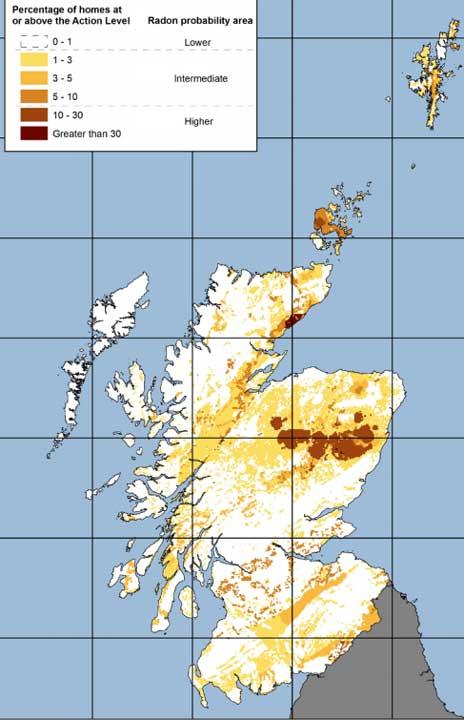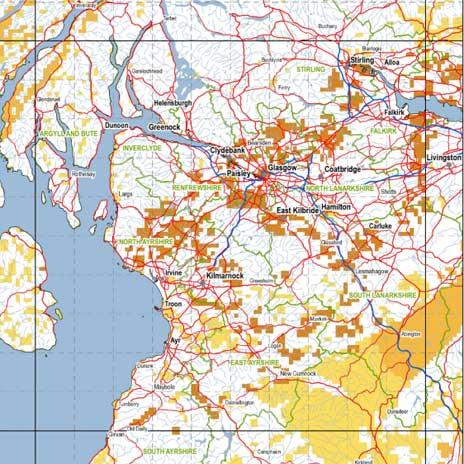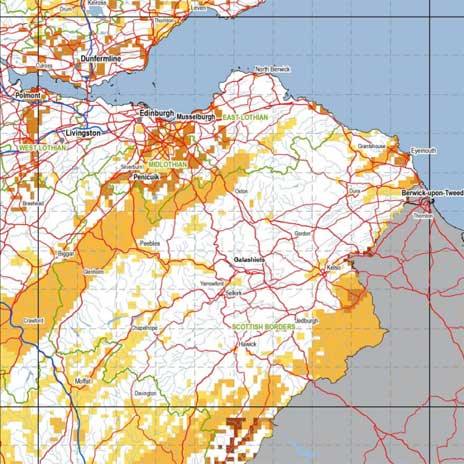Are you at risk from radon gas?
- Published
High levels of radon gas are thought to be present in areas across Scotland. What is radon gas and should we be worried?
Uranium, in the minds of most people, is associated with fuelling nuclear power or even nuclear weapons.
And while it is true that Uranium can be used for these purposes it is also a naturally occurring element which is present at low levels in almost all rocks on earth.
Radon gas is part of the radioactive decay chain of natural uranium and is produced in low levels all around the world, all the time.

However, there are some places which have more natural uranium in the rocks and when it decays the radon gas produced from it can seep up in to people's homes and is breathed in by the occupants.
The health risk is lung cancer.
"The alpha particles of radiation from radon and its radioactive decaying products get down into our lungs and as the radiation comes out of the radon gas it strikes the sensitive living tissues of our lung and that can cause long-term damage," says expert Neil McColl.
He says that smokers are particularly at risk.
"If you are exposed to high levels of radon for a long time it significantly increases your risk of lung cancer, particularly if you are a smoker. Radon and smoking together are a much more combined risk to health.
"But even if you are a lifelong non-smoker it increases your risk of lung cancer," says Mr McColl, head of radon at the Centre for Radiation, Chemical and Environmental Hazards.
Radon is said to be responsible for about 1,100 deaths from lung cancer each year in the UK.
Half of these deaths occur among the quarter of the population who are current smokers.
Mr McColl's organisation has worked with the British Geological Survey to produce maps of where radon gas was more likely.
Parts of the Highlands and Orkney stood out as areas of potential risk and along with the Health Protection Agency they set out the job of monitoring how much radon was in people's homes.
They have now moved on to other areas in the Central Belt of Scotland which are also thought to have a potential risk.

The darker orange areas show the higher probability of radon gas
The darker the colour on the radon maps, the greater the chance of a high radon level in a building. However not all buildings, even in the darkest areas, have high levels.
The amount of radon is measured in becquerels per cubic metre of air. The average level in UK homes is 20 Bq m-3. For levels below 100 Bq m-3, the individual risk remains relatively low and not a cause for concern.
However, the risk increases as the radon level increases.

A free test of radon is available, which involves detectors sitting in your house monitoring the levels for three months.
If high levels of radon are detected there are various measures which can be taken, mainly involving creating better ventilation in the home.
For people who live on the upper floors of buildings there is good news.
Mr McColl says: "The problem is with the gas seeping up from the ground. Most of the properties we look at and do testing in are on the ground floor."
- Published5 June 2013